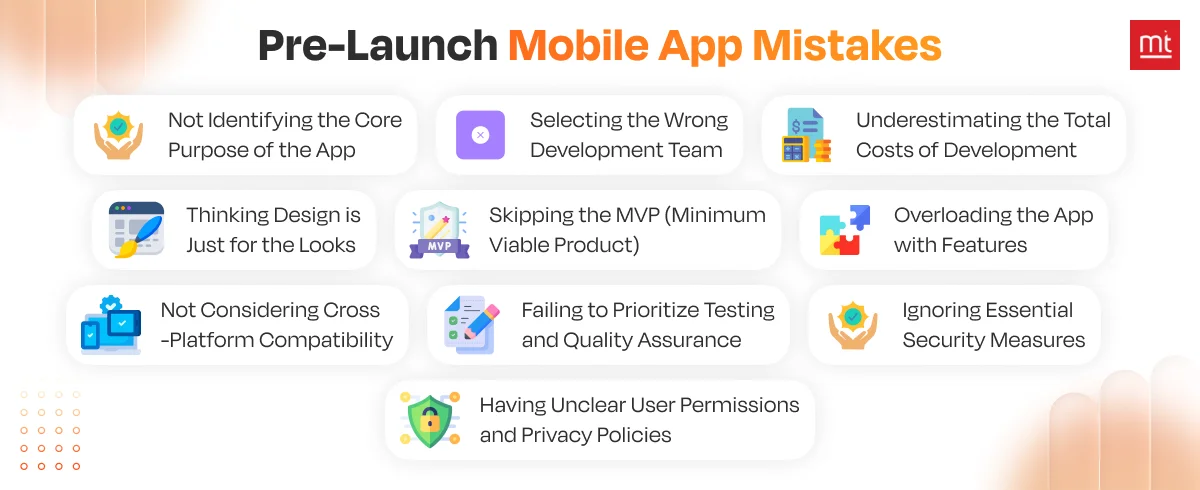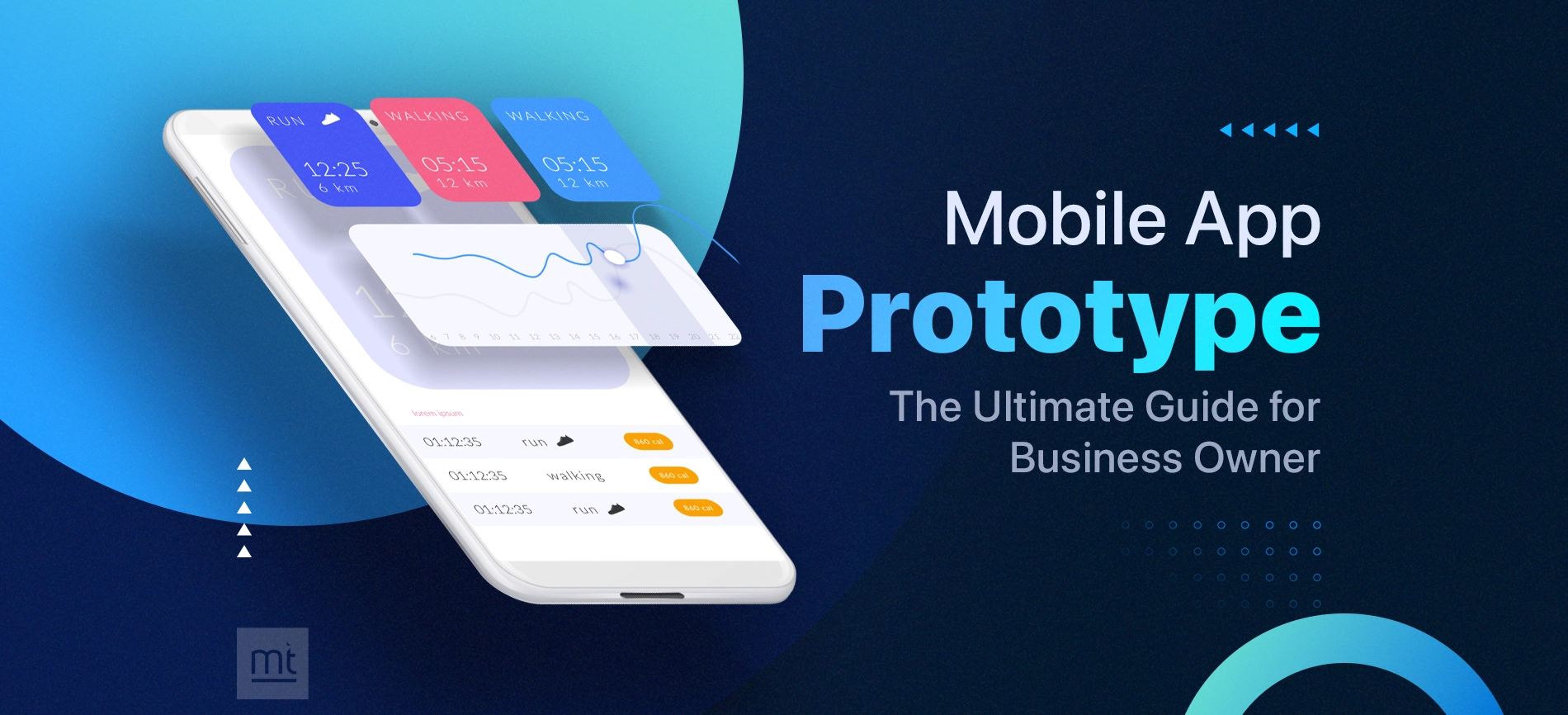Get Free Trial Week Developer Access, Try Before You Hire. Click Here to Claim Now
Key Takeaway:
- Overloading your app with too many features can slow development, confuse users, and drain your budget.
- Understanding your audience early helps you build a useful app that people actually want.
- Poor planning for costs and post-launch expenses is one of the mobile app development challenges, so set realistic budgets and always have room for future upgrades.
- Invest in user research early to understand your audience’s real needs and preferences.
- Prioritize app security and performance from the very beginning to build trust.
- Keep improving your app after launch with regular updates and feedback-driven changes.
Introduction:
Day by day the mobile app market is getting more competitive than ever. Every new entrepreneur is creating a mobile app for their business and trying hard to reach users. There are over 8.93 million apps across iOS and Android stores, and the numbers are rising fastly. Research has found that 95% of apps fail within their first year, either due to improper planning, lack of research, design issues, or many other mistakes. Even if you hire the best mobile app development agency, you may still face some issues because the mobile app market is changing continuously in terms of technology, audience, and many other things.
Hence, it's important to know common app development mistakes to understand what can trouble you and what not.
If you're planning to build an app, our blog can be the most valuable investment. We've identified the top mobile app development mistakes that can be threatening your app's success. You will also read some good app development best practices and how to spot mistakes in the initial phase to ensure your long-term app success.
10 Common Mobile App Development Mistakes and How to Avoid Them
Every app-building journey is different. The app ideas don't fail because it's a bad idea; they fail because of mistakes made during the mobile app development stages. Here are some of the pre-launch and post-launch mobile app development mistakes that the majority of entrepreneurs make unknowingly.
Let's go through all of them one by one.
Pre-Launch Mobile App Mistakes

1. Not Identifying the Core Purpose of the App
If you don't know the core purpose behind making the mobile app, then you will make lots of silly mistakes for sure. Because everything in the mobile app development phase is chosen with a purpose, the tech stack, designs, features, functionalities, and more. And if you don't know the core purpose, then you will definitely go in the wrong direction.
How to Avoid:
- Before coding, write a one-sentence description of your app's core purpose.
- Define the main problem your app will solve and stick to it.
- Validate this with potential users through surveys or interviews to see if you meet real demand.
2. Selecting the Wrong Development Team
Choosing the individual developer or development team that charges less is a mistake because it might give low-quality work or a lack in expertise that might trouble you later. You'll end up spending more money fixing problems or rebuilding the entire app from scratch.
How to Avoid:
- Research good teams by checking their portfolio, reading client reviews, and asking for references.
- See if they have experience with apps similar to yours.
- Consider factors like communication skills, technical expertise, and post-launch support capabilities.
3. Underestimating the Total Costs of Development
Many entrepreneurs only calculate for development but forget about testing, marketing, and post-launch updates. This mistake creates a problem after launch because the app will need extra funds to fix outdated features and other things.
How to Avoid:
- Create a budget that includes development, testing, launch costs, ongoing maintenance, hosting, marketing, and at least 6 months of operational expenses.
- Add a 20-30% contingency buffer for unexpected costs.
4. Thinking Design is Just for the Looks
App design is not just about good colors, aesthetics, and layout; it’s about how easy and enjoyable your app is to use. If your app just looks good with animation, but users can't actually find the things they want, then it's of no use.
How to Avoid:
- Do proper UX research and design, and focus on the user first.
- Create user personas, user journeys, and build wireframes with core functionality and ease of use.
- Test your design concepts with real users.
5. Skipping the MVP (Minimum Viable Product)
Most entrepreneurs are in a rush to launch the app and are overconfident, and hence skip the MVP. But this is the big mistake: market conditions change every month, and hence it's important to make a scalable MVP.
How to Avoid:
- Build an MVP with core features that solve the app problem.
- Launch a simple version first, gather feedback.
- Make improvements according to feedback and then release the final version.
6. Overloading the App with Features
Adding more features can add value and make it useful to users, but too many features can sometimes confuse users and may misguide them related to the purpose of the app. It can also make the app slow, increasing development and testing costs.
How to Avoid:
- Add features according to core functionality and purpose.
- Prioritize features according to market trends and business goals.
- Use data analytics to identify which features users actually use.
7. Not Considering Cross-Platform Compatibility
Developing exclusively for one platform because your target audience belongs to iOS or Android can be a mistake because you might cut a lot of cost earlier, but on the same side, you are also losing half of your users. And if in the future, you want to serve both platforms, then you need to rebuild later for the other platforms.
How to Avoid:
- Research your target audience to understand which platforms they use most.
- Consider cross-platform development frameworks like React Native or Flutter to cover multiple users.
8. Failing to Prioritize Testing and Quality Assurance
Bugs, crashes, and performance issues can ruin first impressions. Many developers skip testing on different devices, operating system versions, or real-world usage scenarios with slow internet connections. Even if your app idea is great, if you rush to launch without thorough testing, assuming basic functionality checks are sufficient, it will not work.
How to Avoid:
- Use a testing strategy including unit tests, integration tests, and user acceptance testing.
- Test on multiple devices, operating system versions, and network conditions.
- Use both automated testing tools and human testers to catch different types of issues.
9. Ignoring Essential Security Measures
Data breaches and insecure apps lead to trust and credibility issues. This includes weak password requirements, unencrypted data transmission, poor session management, or inadequate protection of user personal information.
How to Avoid:
- Encrypt sensitive data, use secure authentication methods.
- Follow best practices for app security right from the start.
10. Having Unclear User Permissions and Privacy Policies
Today, users are concerned about their privacy and how their data is used. Many apps ask for unnecessary permissions or fail to clearly explain why they need access to user data like contacts, location, or camera. This can demotivate users to install or use the app.
How to Avoid:
- Only request permissions that are essential for core app functionality.
- Write clear, simple explanations for why you need each permission.
- Create transparent privacy policies in plain language that explain what data you collect.
Post-Launch App Mistakes
Mobile app development is an ongoing process. Launching the app is only the first step; the real problem starts after you release, while maintaining, promoting, and improving features.

1. Forgetting About App Maintenance
Many businesses think that if their app is developed by an experienced mobile app development agency, it will not need much maintenance. But it's not like that, the mobile app is a volatile market, and every day a new thing is updated. Without updates, apps become slow and incompatible with new devices or operating systems.
How to Avoid:
- Schedule regular maintenance cycles to monitor app performance, fix bugs, and update for new OS versions.
- Set aside 15-20% of your development budget for ongoing maintenance.
2. Failing to Plan for Marketing Efforts
Just publishing an app to the App Store or the Play Store will not bring users. If people don’t know it exists and what it is used for, then you need to think about your marketing efforts. Depending only on “organic discovery” usually leads to poor downloads and wasted potential.
How to Avoid:
- Start marketing before launch, like social media campaigns, content marketing, influencer partnerships, and paid advertising.
- Create awareness and an email list.
3. Ignoring Post-Launch Updates and User Feedback
Users want continuous improvement. They evolve and learn from trends. If you ignore reviews, complaints, or feature requests, your app will quickly lose relevance, and users will switch to competitors.
How to Avoid:
- Monitor app reviews, feedback, and analytics regularly.
- Release updates that fix issues, improve performance.
- Introduce new features based on what users ask for.
4. Having a Poor or Unclear Monetization Strategy
Monetization strategy should also be a part of the development cost. Many people suffer financially because of an unclear revenue model. This includes poorly implemented ads, confusing subscription tiers, or pricing strategies that don't match your target audience's willingness to pay.
How to Avoid:
- Decide early how you’ll make money, ads, subscriptions, freemium, or one-time purchases.
- Test which model best fits your audience.
5. Lack of App Store Optimization (ASO)
There are already millions of apps in app stores. Using generic app titles, poor descriptions, low-quality screenshots, and irrelevant keywords will not help users discover your app. This is because of poor ASO.
How to Avoid:
- Optimize your app’s title, description, and keywords.
- Use high-quality screenshots, engaging videos, and encourage good reviews.
- Regularly update your listing to improve rankings and attract more downloads.
How to Avoid Common Mobile App Mistakes?
Every app project faces different challenges, but most mistakes can be avoided with the right approach. Here are some smart practices that can help you avoid mistakes and get the most out of the app.

1. Adopt an Agile Development Methodology
Agile keeps your project flexible and adaptable. Instead of making long, rigid plans, build an app in small steps, test quickly, and adjust when needed. This will help you to see if your ideas work.
2. Focus on User-centric Design Thinking
You are creating an app for users, not for your personal profit. So start by understanding your users' problems, motivations, and behaviors through research and interviews. Keep yourself in the place of users and then develop.
3. Collaborative Team Culture and Communication
Poor communication between designers, developers, and stakeholders can create confusion, missed deadlines, and a product that doesn't meet expectations. Create a culture where the team understands priorities and solves challenges together. Have regular check-ins, use transparent tools, and clear roles.
4. Continuous Learning and Skill Development
Technologies are constantly upgrading, and you can only succeed in mobile-first if you upskill yourself. Encourage your team to learn and use modern practices and tech stacks. Organize training, workshops where your team can explore new tools.
5. Implement DevOps Practices
Manual deployment processes are slow, error-prone. Use DevOps practices to automate testing, deployment, and monitoring. This will help you release faster and promptly respond to users and fix critical issues.
6. Establish Strong Security Protocols
Users will only trust your app if you use secure protocols like encryption, secure logins. They must feel safe using your app. Conduct regular audits and be transparent.
7. Community Engagement and Beta Testing
Build a community of potential users early and involve them in testing your app before you release it to a huge audience. Beta testing can help you catch bugs you missed, and suggest valuable improvements.
8. Plan for App Scalability from the Start
Always develop the app with an aim of a huge users. Design your app's architecture that is capable of handling increasing users, data, and features from the beginning. You can start small, but choose everything keeping the scalability in mind.
Final Thoughts
Building a successful mobile app doesn't require genius-level intelligence; you just need to predict and avoid mistakes. at the right time. This can only be done when you are familiar with the relevant app development mistakes. The leading giants like Instagram, Google Dropbox, and Twitter all once made a mistake, but they fixed it at the right time. Every app development mistake we've discussed is completely preventable with proper planning, research, and execution.
Focus on the essentials, listen to your users, and adapt as you grow. With the right approach, you can definitely build an that delivers real value to your audience.
How ManekTech can Boost Your Mobile App Success?
Manktech has completed over thousands of successful mobile app developments that are currently delivering great results. With over 14 years of presence in the mobile app industry, we hold a strong grip on executing complex mobile app projects. Our experienced team specializes in user-centric design, agile development, and comprehensive testing to ensure your app succeeds from launch. We also have a specialized team of consultants, BA, researchers, and marketers to help with the initial to launch phase of mobile app development.
Want to build an app that users love and generates real revenue? Reach us and get a free quote to get an idea about the mobile app development timeline and mobile app development cost.
FAQs – Common Mobile App Development Mistakes to Avoid
Q 1. Why is it important to avoid overloading an app with too many features?
Ans: Adding too many features confuses users and makes it harder to use. Plus, it also increases your mobile app development cost. So, it's better to start simple with the core features people really need.
Q 2. What steps can I take to ensure my app succeeds?
Ans: To make the app that actually solves the real issue, follow this:
- Focus on solving a real problem for your users.
- Keep the design simple, and test your app early with a small audience.
- Collect feedback, improve it step by step.
- Make sure your marketing plan reaches the right people.
Q 3. What is the typical cost of developing an app?
Ans: The mobile app development cost depends on the features you want, where your development team is located, and technical and other considerations. A simple MVP can cost around $20,000–$40,000. While a feature-rich app can cost over $100,000.
Q 4. How long does it usually take to build an app?
Ans: If it's a basic app, it takes 3–6 months to build a basic app, and if it's a complex one with advanced features, it can take more than 6 months or a year. The accurate mobile app development timeline can be calculated by checking design, testing needs, and changes during development.
Q 5. How do I launch an app successfully?
Ans: It is more than publishing to the app store. You must have a clear marketing plan, social media buzz, and convince users for early signups or beta testers. Collect reviews, monitor performance, and fix wherever issues are faced.
Q 6. How do I create an app that makes money?
Ans: Every monetization model makes money in their own way. You need to find out what model suits your business. The best option is a freemium model, offer free trials to users if you are new in the market, then ask for a premium purchase. You can also place ads to earn from the app. If you are an established brand, then you can simply opt for an in-app or subscription model.
Q 7. What are the most common mistakes founders make when creating apps?
Ans: Common mistakes include trying to build too many features at once, skipping market research, underestimating costs, and not testing with real users. Some founders also forget about marketing, assuming a good app will sell itself.
Subscribe to Our Newsletter!
Join us to stay updated with our latest blog updates, marketing tips, service tips, trends, news and announcements!



![How Much Does It Cost to Build a Mobile App? [Checklist]](https://www.manektech.com/storage/blog/image/1765777729.webp)
![How to Speed up Mobile App Development Process and Save Time? [Checklist]](https://www.manektech.com/storage/blog/image/1644828806.jpg)















